When it comes to Chris Allison’s successful comic series, we can appreciate his distinct art style and dark, humorous gags. He started “ToonHole ” with 3 other cartoonists, a web page where he posted his comic strips in 2010. His Instagram followers adore the way he delivers his jokes and punchlines. He also has a story on DreamWorks Feature Animation in the works and does other animations in his spare time.
Are you tired of the same old boring comics with predictable punchlines? Well, brace yourself for a wild ride because ToonHole’s artist is here to shake up your comic-reading experience. Get ready for some unexpected twists and turns because these comics will have you laughing until your sides hurt. No spoilers here, but let’s just say you’ll never look at some things the same way again.
Influences
First, we inquired as to whether he had any key influences in his life that may have aided in the development and refinement of his style. He told us, “Tom and Jerry were my initial source of inspiration.

Looney Tunes, Goofy shorts, and Fleischer cartoons were among my favorites. I will most likely spend the rest of my life attempting to sketch and paint in the manner of many of those artists from the 1940s.”
Teacher Support
Chris had a lot of support from his teachers in high school, who introduced him to the arts. He had an animation class run by Paul Messerle, who went on to receive a prize for the San Diego County Teacher of the Year in 2016.

Chris also credits his life drawing teacher, Jacqueline Nicolini, as a great inspiration. After graduating, he attended California State University, where he continued to study and perfect his drawing skills.
It Takes Time To Produce A Comic Strip
Because art takes a long time to practice as well as produce, we asked Chris how long it takes him to complete one of his comics.

He says, “in general, I think about 6 hours for most of my comics but it’s hard to gauge. I’ll pencil 3 or 4 comics on watercolor paper in a couple nights, then ink them all in one night, then try to color a couple comics at a time.”
The Process
Chris continues to explain that it is easier with watercolor because you can move onto the next panel while the last panel dries, and you can use the colors you just mixed to keep the panel colors uniform.

He also uses Photoshop and other computer programs to produce comics. In that case, he tries to get it done in one sitting. The complexities are different in each format, and also the time invested may vary.
Writer’s Block
Being an artist is difficult; one can easily experience a lack of inspiration, exhaustion, and other issues. We asked Chris about his comics ideas and what happens when inspiration is difficult to come about.

“Really classic artist problem: the blank page stares back at you, blankly. My remedy has been embracing limitations. It’s a hard task to just “be funny” with no footing to hold onto. I pick on observable things from my everyday life.”
Carry A Sketchbook At All Times
Chris carries a small sketchbook in his back pocket, with all the topics written in the back, and a pen. This way he can write or sketch down ideas wherever he is and not risk forgetting them when he gets home.

He does most of his writing to avoid boredom when he does chores or menial tasks such as changing the oil, waiting for his accountant to do his taxes, or even while eating lunch.
Burnout
As we all know, creative work may occasionally lead to burnout, so we inquired if he has dealt with this as well. Chris goes on to explain that while this is a struggle common to artists, he doesn’t have time to be burned out.

Since he works in animation for his day job, has a small record label “King Volume Records” and recently jumped to work on feature films, he doesn’t have much time left.
Simultaneous Different Projects
In his own words, Chris says: “We regularly put out ToonHole comics and have been working on animated shorts and pitching TV shows/movies of our own. Frankly, I don’t have time to be burnt out and I think that’s the thing that’s been keeping me going all these years.”

It seems as if diversifying the type of work he does keeps the stress levels at bay. He never gets bored with all those projects.
The Creative Process
Although the creative process isn’t easy, it does have some enjoyable aspects. “I honestly like the whole process. Comics are fun because I get complete control, but they’re also stressful because of it.

Writing is fun, to watch comics emerge out of nothing. Inking and coloring comics is phenomenal because I can put on music and get into a flow state.” Flow is a state of mind where you become fully immersed in an activity.
Collaboration With Other Artists
Working in animation allows Chris to collaborate with other artists and benefit from their experiences (and steal their secrets). Working with voice actors, putting drawings on a timeline to watch how they move, adding music and sound design, are all part of the process.

When reflecting about this, Chris says “Making things is simply fun, and it adds a lot of significance to my life.” The exchange of ideas between artists keeps them inspired and motivated.
Social Media
We asked him about the inspiration behind his Instagram account. He explains the beginnings, “Instagram was the dominant platform when I started. It’s been a tough go recently, as the algorithms seem to be changing and demanding a volume of content that I personally find a challenge to meet with any sort of quality threshold.”

There is pressure to keep up with other accounts and a constant struggle to produce and upload new content.
Platforms
Good work takes time to make and artists are known perfectionists, their art goes through various processes to achieve their minimum standard. Chris followed up, “A comic will be languishing in my sketchbook for a while, broken. Weeks later I will figure out a way to reword or rephrase something that makes it work.

So the next platform that really wants to showcase images will motivate me to start a new account on it too.”
Digital Artist
Digital art takes a lot of patience, time, resources, and money. As a result, we were curious as to how Chris got his start in the digital art world.

“I started my digital art journey in the art community that Tom Fulp started at Newgrounds.com when I was in middle school. It was a Flash community at the time, hosting a Flash portal that people could submit to and audiences got to rate them.”
Advice To Young Artists
It was good for him to have a place where he could get immediate feedback on his work and connect with and learn from other fellow artists. To this day Newgrounds is still going strong, to which Chris strongly advises young artists and filmmakers to visit it and contribute their work.

It is good training and practice for future endeavours without spending much money. Young aspiring digital artists can take good advantage of this opportunity.
Self Doubt
In an insightful reflection, Chris shares a candid glimpse into the hurdles of the creative process, emphasizing the common obstacle of self-doubt. He highlights the importance of perseverance, advocating for pushing beyond the fear of imperfection by actively engaging in the work.

Chris says, “I think one of the biggest roadblocks for creative folks can be self-doubt. We don’t want to START on an endeavor because the prospect of something not turning out perfect can feel overwhelming, so we delay getting started on something.”
Stay Motivated
Artists tend to get motivated by many things such as curiosity and the search for beauty. Chris says, “Most people around me had my passion for making artwork when we were young, excited to draw with markers and crayons and sculpt things with PlayDoh.

But they seem to have grown out of it, whereas I haven’t. It is still something that keeps me excited. I’m going to keep chasing it while the passion keeps burning.”
How ToonHole Started
ToonHole is a project that started back in 2010 by a group of 4 cartoonist friends: Ryan Kramer, Mike Nassar, John Martinez and Chris Allison. The comic strips are intended for adults, due to the subject matter and the level of sarcasm and irony.

It has become very popular in the community, people find some comic relief during their stressful days at work. The comic strips are perfect; short, with few words and killer punchlines.
Chris Allison
Christopher “Chris” Allison was born January 16, 1986, in California, USA. He is a storyboard director/artist and writer who has worked for 11 years on television shows such as Looney Tunes Cartoons, Spongebob, among others.

He was credited as a storyboard artist on two Spongebob episodes: “Food Con Castaways” and “Krabby Patty Creature Feature.” Chris has also worked in various other TV series: The Blubburbs (2018), SMBC Theater (2009) and Tito Yayo (2010).
Binge On ToonHole Comics
The ToonHole official Facebook page has 77k followers and comic strips are published every Monday, Wednesday and Friday. You can go check out the comics there and binge through the older stuff.

Their Twitter account has over 2.2k followers where you can comfortably share the comics with your friends. You can also follow each cartoonist from the project individually on Instagram. ToonHole is a fun little getaway from when you are commuting to work.
Gaming Prodigy
Toonhole John, acclaimed as a professional animation cartoonist, harbors a unique talent beyond the art studio. He stands out as the most adept ‘Call of Duty’ player among the Toonhole team, and possibly ranks among the best in the world. His extraordinary gaming skills complement his artistic prowess, showcasing a blend of creativity and competitive spirit.

Advice From Chris
When we asked Chris for some helpful advice for our aspiring artist young readers, he said “My advice for anybody looking to make comics to make people laugh is simply: do it.

There is no shortcut or secret path to get good at making comics other than making comics. Do good drawings, do bad drawings, do whatever drawings you can.”
What To Do When You Flop
We also asked him how to deal with flopping from time to time, to which he explained, “Everyone falls flat once in a while, so don’t beat yourself up about it.

Failure is part of growth, not evidence of your potential. Keep finishing comics, and just try to make the next one even better! I’m still trying to do this.”
Meet Ryan Kramer
Ryan Kramer is another founding member of Toonhole. He is a professional cartoonist who works in the television animation industry by day and creates his own comics and cartoons by night.

He also lives in the suburbs of Los Angeles, California. He said that apart from making comics, he also enjoys reading about philosophy, fitness, meditation, and raising his children.
“Don’t Leave Me Hanging”
The critically acclaimed cartoon artist has also released a book titled “Don’t Leave Me Hanging” which is a selection of his best comics.

Thanks to his comedy and creative abilities, Ryan makes fun of some of our social big springs, and they are downright relatable. You can go ahead and purchase it online and have it delivered to your home.
Ryan’s Beginnings
Ryan Kramer was born on September 6, 1983 in Diamond Bar, California, USA. He is known for his work on Tito Yayo (2010), Looney Tunes Cartoons (2019) and Ben 10 (2016).

His story is similar to fellow Toonole cartoonist Chris Allison’s, he started getting into comics when he was just a kid and he later got into animation at college.
Cartoon Style
When asked about his personal inspiration, he told us, “I developed my style through a fondness of classic cartoons and MAD magazine. I’m also inspired by my peers in the animation industry and the webcomic world.”

He has got almost 99k people that follow him on Instagram and he has nearly 5.5k fans each on Facebook and on Twitter.
The Challenges Creators Face
Ryan shared the challenges that they face as creators.“I met the other ToonHole guys in college and we bonded over a love of old cartoons and similar drawing sensibilities.

It’s always a challenge to grow your audience consistently since media platforms are always evolving. It’s also a challenge to get big accounts and get your shared work appropriately credited.”
Bringing Joy To The Readers
Currently, Ryan directs Looney Tunes at Warner Bros. He’s grateful for all the fans he has accumulated over his 10 years of creating content, “I hope my work ushers a joy into the world because making these has surely given me immense pleasure.”

He’s inspired to keep drawing because he gets a satisfying feeling when he finishes something he likes.
How Creativity Works
When asked about his personal process, Ryan said, “Writing a good comic means I have to allow time for my mind to wander so I can capture an idea worth drawing.

A comic from start to finish is usually anywhere from 2 to 6 hours depending on complexity and style.” It depends on how the artist is feeling that day.
The Annie Award
Ryan was nominated for the prestigious Annie Award. The Annie Awards are accolades which the Los Angeles branch of the International Animated Film Association, ASIFA-Hollywood, has presented each year since 1972 to recognize excellence in animation shown in cinema and television.

It was for the “Enter the Dragon” episode from the animated series Kung Fu Panda: Legends of Awesomeness (2011).
The Patrick Star Show
Ryan is also involved in The Patrick Star Show, a spinoff show from the SpongeBob universe that premiered in july 2021. It’s about Patrick Star hosting his very own talk show at his family home, with the support of his eccentric family.

He was the storyboard director for the “Lost in Couch” segment from the “Lost in Couch/Pat-a-thon” episode.
Tig N’ Seek
Another project that Ryan is participating in is Tig N’ Seek (2021), which is an animated television series created by Myke Chilian for Cartoon Network, who previously served as a designer on Rick and Morty.

It is produced by Cartoon Network Studios and it was moved to the then-upcoming streaming service, HBO Max. Ryan is one of the storyboard artists.
Meet John Martinez
John Martinez is the third member of the Toonhole webcomic collective. Like Chris and Ryan, John is a storyboard artist who is originally from Los Angeles, California. He has worked for Cartoon Network, Stoopid Buddy Stoodios and Warner Bros among other companies.

He graduated in 2009 from California State University-Fullerton with a Bachelor of Fine Arts Entertainment Art and Animation.
Working For Robot Chicken
John worked as a storyboard artist for Adult Swim’s hit show Robot Chicken during seasons 6,7,8 and 9 from 2012 to 2017. Adult Swim is the American adult-oriented nighttime programming block of the basic cable network Cartoon Network.

According to John, he is also the best Call of Duty player of the Toonhole squadron and possibly the world.
Introducing Mike Nassar
The remaining member of the Toonhole family is Mike Nassar. He’s an American animator, storyboard artist, and voice actor. He did the voice of Broseph in Mondo Media’s Dick Figures and its feature film, Dick Figures: The Movie.

He has also worked as a storyboard artist on shows such as Unikitty!, Dawn of the Croods, and The Fairly OddParents.
Dallas T. Washington “America’s Super Agent”
Mike also has a separate project, a comic called “Dallas T. Washington, America’s Super Agent,” that he does along with comic artist Adam Balderas. It was launched back in 2020, and it is available on the Toonhole website.

Aside from comic projects, Mike also enjoys doing watercolor and drawing with pencils. His Instagram account features many of his pencil sketches.
One-minute Flash Short Film
Mike has written a super-detailed blog post documenting every step of how he and a few other artists produced “Timmy’s Christmas”, a one-minute Flash short completed in a week. It was done for educational purposes, and many aspiring artists have benefited from it.

He explains his techniques and production pipeline using the Flash app. The post is still available online.
Choose An Idea You Believe In
Your creative perspective is what sets you apart from all the content being published online. Begin with an idea in which you passionately believe.

Because starting a comic book takes a large amount of work, you will want to be sure you’re invested enough in your characters and storyline to see it through. Keep a notebook handy to scribble down dialogue, sketches, and story ideas as they occur to you.
Write The Story First
Avoid jumping right in and beginning to draw for your comic book. You already know how important a strong storyline is if you’ve ever read one.

Develop your script before you begin illustrating if you want to create a comic that seems cohesive and well-designed from beginning to end. Otherwise, you risk making a slew of panels that will have to be altered or discarded if the story doesn’t fit.
Research The Craft Of Making Comics
You may believe you’ve seen enough comics to be able to create your own. However, you can always learn something new from more experienced illustrators. Read books, interviews, and blogs by your favorite comic book creators in between your own creative work hours to learn about their practices.

There are tutorials and tips for artists new to comic book development. Use these materials and sources of inspiration anytime you’re stuck.
Plan The Layout
Make sure the content fits each panel while still maintaining the story’s momentum to keep readers engaged. Is the dialogue functional? Is there too much going on on each page?

Consider how you may build tension at the end of a page so that the reader wants to read on. The more you sketch, the better you’ll get at figuring out how to order your panels and when to trim them.
Create A Set Of Rules For Drawing
Establishing a consistent style of illustration that is doable and efficient for the scope of your project is one tip from experienced comic book artists. This could entail giving some characters or backdrops specific textures, shading, or coloring effects.

Alternatively, you could limit the number of frames per page. These are your particular criteria for maintaining aesthetic consistency and avoiding generating drawings that are too complicated to duplicate later.
Draw The Illustrations
Whether you’re sketching with pencil and ink, tablets, or drawing apps and software, the process will always be different. Whatever sketching approach you select, there are a plethora of blogs, tutorials, and forums to help you along the way.

Generally, you’ll follow the following steps to complete your comic book illustrations: drawing (outline illustration), inking (add texture and depth to them), coloring (select a color palette), and lettering (select font).
Choose A Format And Publishing Tool
When it comes to print comics, the format you choose affects the whole reading experience. The Magazine format from Blurb is a popular choice for comics. You get a lot of room on each page and can print a large number of copies for a reasonable price.

Decide which publishing tool best suits your ability level once you’ve determined your format. Here’s when you can start seeing the end product!
Interesting Facts You Didn’t Know About ToonHole Chris
ToonHole Chris, whose real name is Chris Allison, has been creating comics for a decade, and in an interview, he stated that inspiration is like magic – it can come from anywhere. Chris said, “There are no rules! It can be from a conversation, a book, an unheard conversation, a misunderstood word, or seeing someone lift up the sidewalk.”

He also shared that some of his comics are drawn using traditional materials, but on average, it takes about three hours for him to complete a comic, from sketch to finished product.
There is No Shortcut
As for those who are thinking about starting their own comics, Chris advised, “do it from start to finish.” He also shared that some of his earliest memories are of drawing for other school kids and said, “I’ve always wanted to do art.

My advice to anyone who wants to create comics to make people laugh is simple: do it. There is no shortcut or secret path to learning how to create comics other than how to create comics. Do good drawings, do bad drawings, do whatever you can.”
Everyday Problems
ToonHole Chris is a popular character from the webcomic ToonHole. The character is a cartoon version of the comic’s creator and is often depicted as the main protagonist of the comic. He is known for his wacky and humorous antics and is a fan favorite among readers.

It is relatable, and many readers can see a bit of themselves in him. He often finds himself in relatable situations, such as struggling with work, relationships, and everyday problems. This relatability is one of the reasons why the character is so popular among readers.
Featuring parodies of Star Wars and Harry Potter
ToonHole Chris is known for his pop culture references and is often depicted as a fan of various movies, TV shows, and other forms of media. This has led to many strips featuring parodies of popular franchises, such as Star Wars and Harry Potter. These references are cleverly integrated into the strip and often include subtle nods to the source material.

He is a character that has evolved over the years. He has undergone several changes in his appearance and personality, becoming more complex and well-rounded as the comic progresses. This evolution has helped to keep the character fresh and exciting for readers.
Organized Fans Meet-ups
ToonHole Chris is also known for his unique sense of humor. He is often depicted as a prankster and a jokester, and his antics often lead to humorous situations. He’s a great source of laughter and entertainment for the readers.

It has a strong fanbase, and fans often create fan art and fan fiction featuring the character. Fans have also organized meet-ups to celebrate the comic and its characters.
Most Iconic and Beloved Characters
ToonHole Chris is a character that has been featured in various merchandise, including t-shirts, mugs, and other items. This merchandise has become a hit with fans, who enjoy showing off their love for the character in the form of physical objects.

He has also made appearances in other media, such as social media and video games, which has helped to expand his reach and popularity even further. This has helped further solidify his position as one of the webcomics’ most iconic and beloved characters.
A Digital Force in the Evolution of Internet Culture
In the vast and ever-evolving world of the internet, a unique and vibrant force has emerged to shape the landscape of digital art and humor: Toonhole Comics.

Since its inception, Toonhole Comics has significantly impacted internet culture, extending its influence across social media platforms, inspiring fellow webcomic creators, and contributing to the growth and development of webcomics as a digital art form. In this article, we will delve into how Toonhole Comics has influenced internet culture and the world of webcomics.
The Toonhole Phenomenon: Gaining Traction on Social Media
Toonhole Comics’ journey to internet stardom can be traced back to its early days on social media platforms such as Facebook, Twitter, Instagram, and Tumblr.

The creators behind Toonhole Comics have harnessed the power of these platforms to share their work, reaching out to an ever-growing audience of devoted fans. The key to Toonhole Comics’ success on social media lies in its ability to create relatable and shareable content.
Solidifying its Place as a Prominent Figure In Internet Culture
The comics often tackle universal themes, such as the absurdity of modern life, social issues, and pop culture, with a healthy dose of dark humor and satire.

This combination has proven to resonate with a broad audience, who eagerly share the comics with their networks of friends and followers. As a result, Toonhole Comics has experienced exponential growth in its fan base, solidifying its place as a prominent figure in internet culture.
Influence on Other Webcomics and Creators
Toonhole Comics’ success has not gone unnoticed by the broader webcomic community. Many aspiring webcomic artists and established creators have taken inspiration from Toonhole Comics’ distinctive style, humor, and commitment to pushing boundaries.

The creators of Toonhole Comics have demonstrated that taking risks and daring to be different can lead to a loyal following and lasting success in the digital space.
A New Generation of Webcomic Artists
Notably, Toonhole Comics has inspired a new generation of webcomic artists who have adopted similar approaches to humor, tackling taboo subjects or exploring the darker side of life through satire and wit.

This has led to a more diverse and dynamic webcomic landscape, where creators are encouraged to challenge conventions and push the boundaries of digital storytelling.
Contributions to the Wider World of Webcomics and Digital Art
Toonhole Comics’ impact extends beyond its influence on other creators; it has also contributed to developing and growing webcomics as a digital art form. Toonhole Comics has played an integral role in demonstrating the potential of webcomics to engage and entertain audiences across the globe.

By consistently delivering high-quality content, Toonhole Comics has helped raise the bar for webcomics. This has encouraged other creators to invest more time and effort in their work, fostering a more competitive and innovative environment within the webcomic industry. In turn, this has led to the emergence of new artistic styles, storytelling techniques, and genres that continue pushing the boundaries of what is possible within digital art.
Rival Traditional Print Media
Furthermore, Toonhole Comics has helped to challenge the perception of webcomics as a lesser art form compared to traditional print comics. Through its striking visual style and sharp wit, Toonhole Comics has demonstrated the power of digital art to captivate and inspire audiences in ways that rival traditional print media.

This has contributed to a growing recognition of webcomics as a legitimate and valuable form of artistic expression, both within the comic industry and the wider cultural sphere.
Engaging with Fans: Fostering a Sense of Community
One of the most significant ways Toonhole Comics has impacted internet culture is by fostering a strong sense of community among its fans. The creators behind Toonhole Comics have consistently engaged with their audience through social media, live streams, and conventions, facilitating a genuine connection between fans and the creative team.

This has helped create a loyal fan base and encouraged a more collaborative and interactive relationship between creators and their audiences.
Fans Helped to Spread its Reach
Toonhole Comics’ creators have embraced the opportunities afforded by digital platforms to interact with their fans, answering questions, seeking feedback, and even incorporating fan suggestions into their work. This level of interaction has fostered a passionate and dedicated community of fans who actively participate in discussions, share fan art, and create content inspired by the world of Toonhole Comics.

This vibrant fan culture has contributed to the overall growth and influence of Toonhole Comics, as fans act as advocates for the brand and help to spread its reach even further.
The Ripple Effect: Impact on Internet Humor and Memes
Toonhole Comics’ distinctive brand of humor has also had a notable influence on the broader world of internet humor and memes. The comic’s blend of dark humor, satire, and absurdity has resonated with many internet users, creating numerous memes and derivative content based on Toonhole Comics’ original work.

This has further helped cement the comic’s impact on internet culture, as its unique sense of humor becomes increasingly pervasive across digital spaces.
Shaping How Humor is Expressed and Consumed Online
Moreover, the success of Toonhole Comics has encouraged other webcomic creators to experiment with different forms of humor and satire, contributing to a more diverse and dynamic landscape of internet humor.

As a result, Toonhole Comics has played an essential role in shaping how humor is expressed and consumed online, helping to define the unique comedic sensibilities of the digital age.
Meet Tony Esp
Four years ago, the Mexico-based artist began drawing comics as a way to improve his skills in his spare time. Esp told us that at the beginning of his career, he dreamed of making this a full-time job.
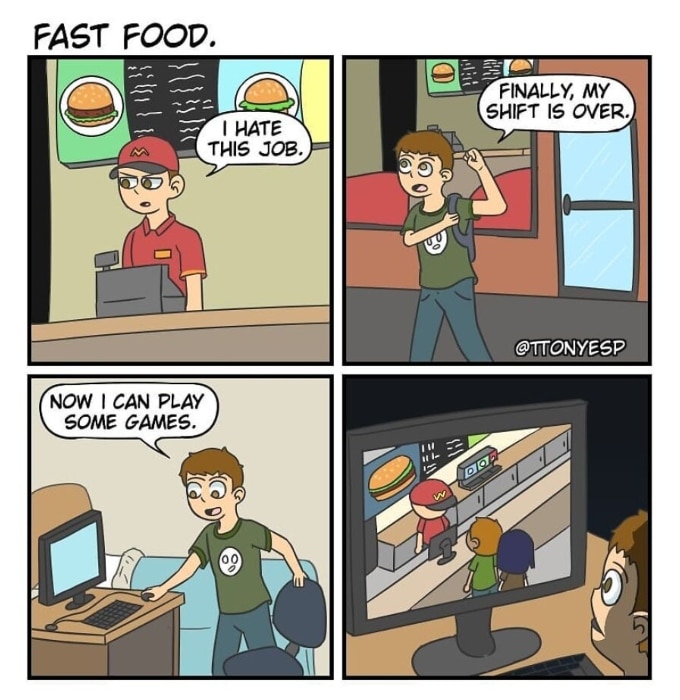
Here’s how he began: “Around Oct 2016, I wanted to create a YouTube channel, but I realized I didn’t have the drawing skills for what I wanted to create, so I had to quit it. I remember reading a comic called Rosianna Rabbit by Alex Dempsey and thought that webtoons were a way to improve my art. So I started drawing comics.”
Where Tony draws inspiration from
We were curious about Tony’s source of inspiration, which seemed to be as random as the concepts in the webtoons. He shared with us, “I don’t exactly sit down in my chair and try to write something funny. Most of the jokes came while I was in the shower, and on occasions, I base them on my life.”
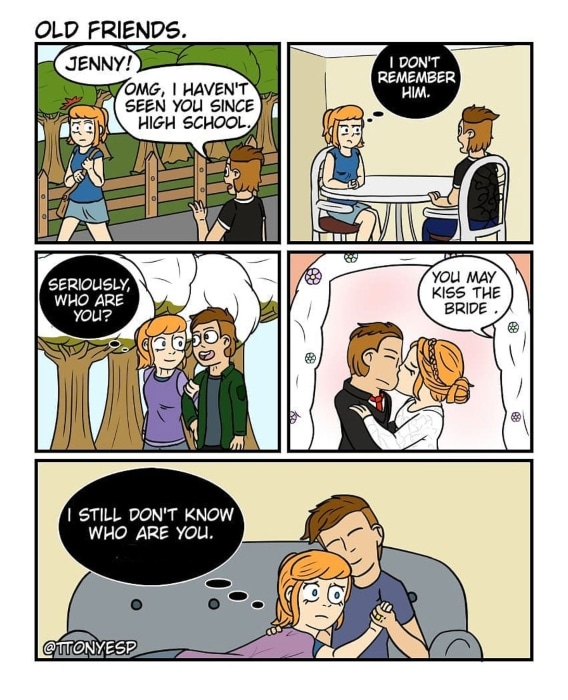
The artist believes his warped sense of humor, not his art style, distinguishes him from the crowd: “I don’t have a specific art style for my webtoons, so definitely my weird comedy.” Indeed his sense of humor stands out!
The hardest part of writing jokes
Creating webtoons is the most challenging part for the artist. When asked about it, Tony said, “The most challenging part is having a good joke. I have a list of useless jokes on my PC that, if I were to draw 1 comic every day, it would take me about 1.5 years to draw them all. Jokes come and go, but only one is good enough to be drawn.
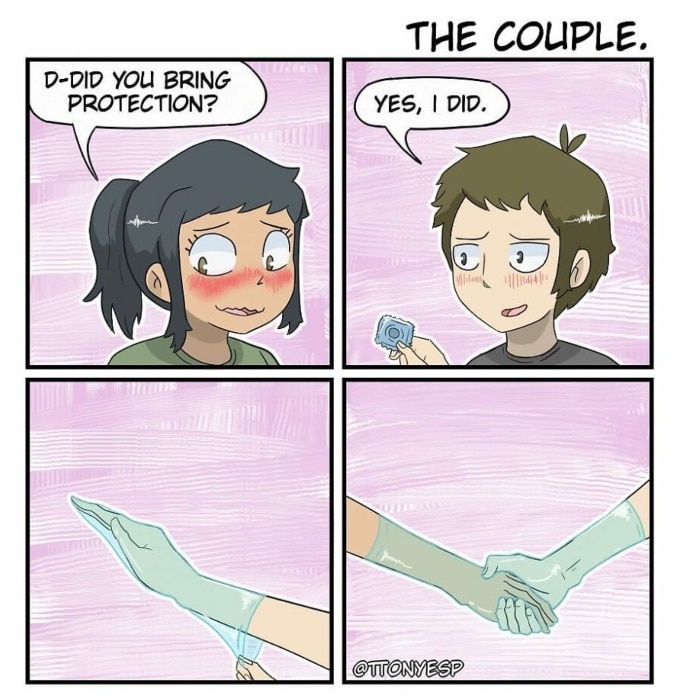
Too bad they come once in a blue moon.” However, his proudest moment as an artist has nothing to do with webtoons but when someone tattooed one of his drawings.
What happens when you have burnout?
When the unexpected global COVID-19 outbreak occurred, it was a particularly trying time for the artist, who had taken a break from comics at the end of 2019 due to burnout and had tried unsuccessfully to take on other artistic projects when the pandemic struck. Tony, in particular, has not given up despite the mental strain.
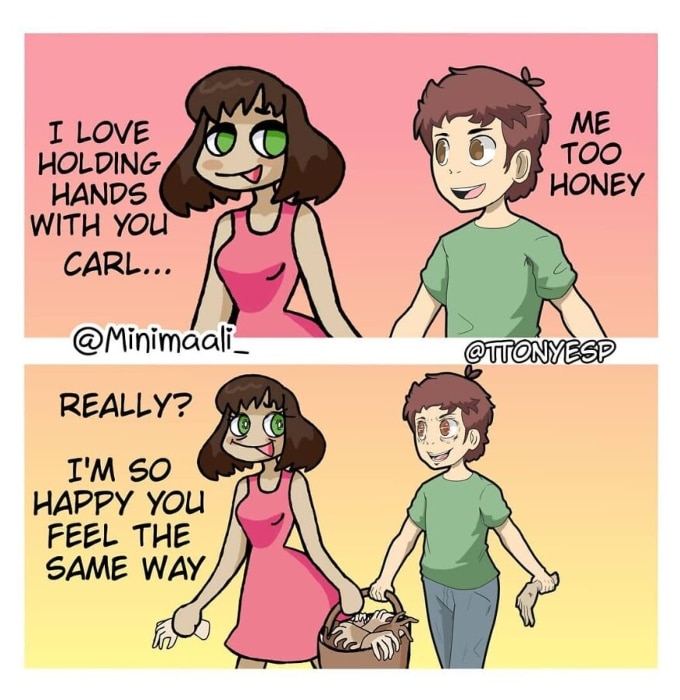
Probably because of the words he also wanted to share with us: “You will not accomplish anything if you wait for things to get better before getting started.” Fortunately, he is back making webtoons and animations, which you can see in his Twitter account.
The comic book industry
The comic book, graphic novel, manga, and anime industries are among the most rapidly expanding in all of literature, and the demand for excellent artists grows with each passing year. It has reached an all-time high not seen since 1997, with sales increasing in each of the last five years, thanks to the rise of comic-book-based blockbusters like Deadpool, Ant-Man, and Guardians of the Galaxy over the last decade.
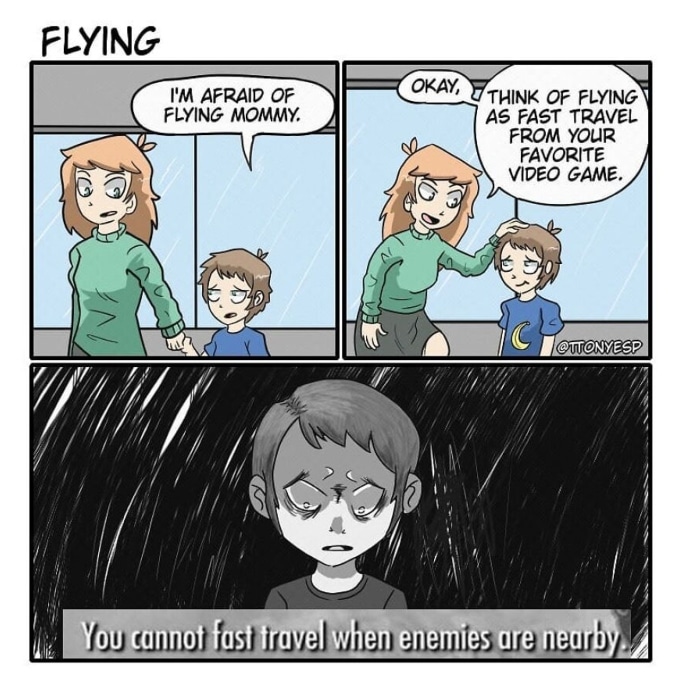
Even webtoons such as Twokinds, and Not A Villain have grown in popularity in recent years. This is a great time to pursue a career in arts!
The basics of comic book art
A comic book or graphic novel artist creates work in the form of a comic strip and may either create the entire strip or contribute to only a portion of it. They use humor to tell a tale about ordinary circumstances, current events, and made-up worlds.
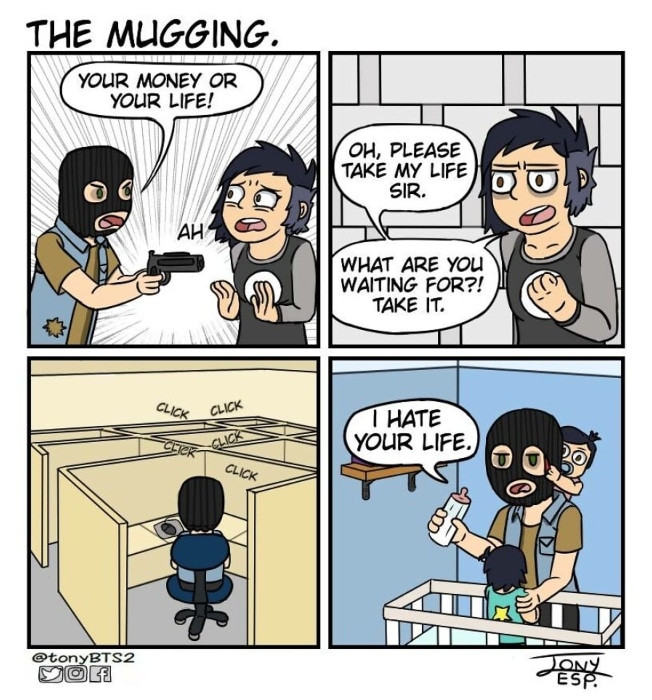
It’s not uncommon for a webtoon or a comic to be created by a group of people. One artist may just work on the comic’s main characters, while another artist or artist works on the backgrounds, and a writer or writer works on the screenplay. It is also worth mentioning that these positions can be swapped out.
A competitive industry
The comic book and graphic novel industry, like the professions of illustration and design, is tremendously competitive, and success requires exceptional talent. And it is possible that your first employment will not be as a comic book artist.
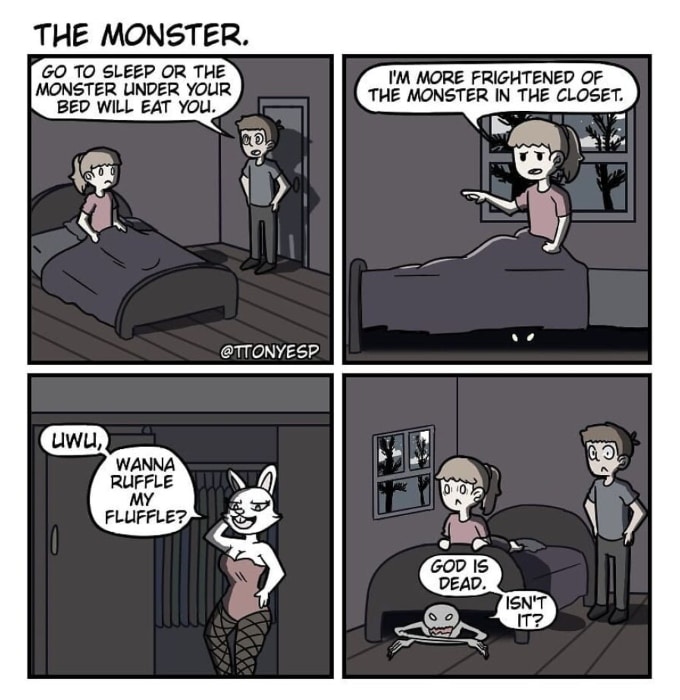
On the other hand, entry-level work at a publishing house or a film production company can provide essential skill-building chances that you can use later. Once you have experience in the publishing arena, getting your work across to the right people will be easier. Working from the inside up to where you want to be is recommended.
The essential skills you’ll need
Although almost anyone may become a comic book or a webtoons artist, there are a few necessary abilities to succeed in this field. Obviously, creative ability and a natural talent for drawing are the most vital skills to have, followed by the capacity to conceptualize.
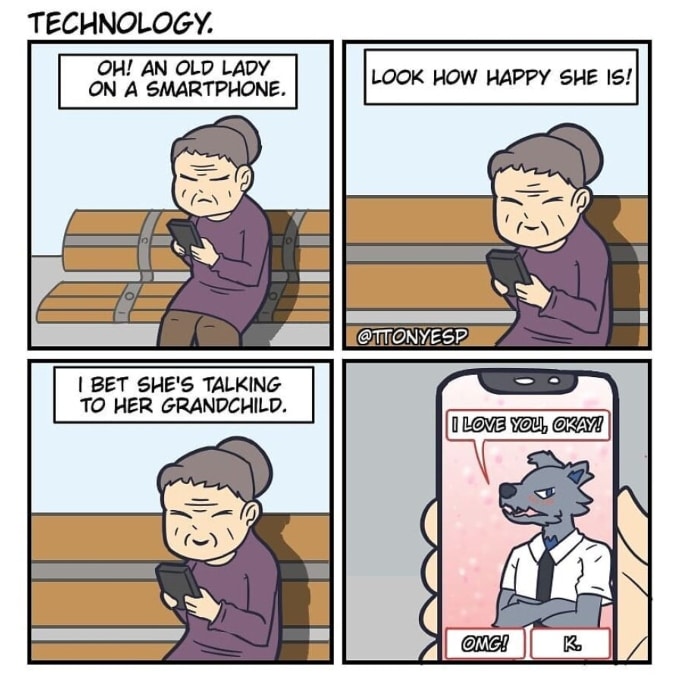
And, because a lot of comic book art is created digitally, even for printed comics, artists must be familiar with and proficient in a range of graphic software, including Adobe Photoshop and Illustrator. A Wacom tablet is also recommended. However, the process of making comics typically begins with a pencil in the form of rough sketches on paper.
A webtoon artist must know human anatomy
A comic book artist must be able to sketch the human body accurately because most (if not all) comics include a primary character and a few or many secondary characters. Unless the comic specifically asks for it, over-exaggeration can only take an artist so far; making characters look believable is crucial in this competitive industry.
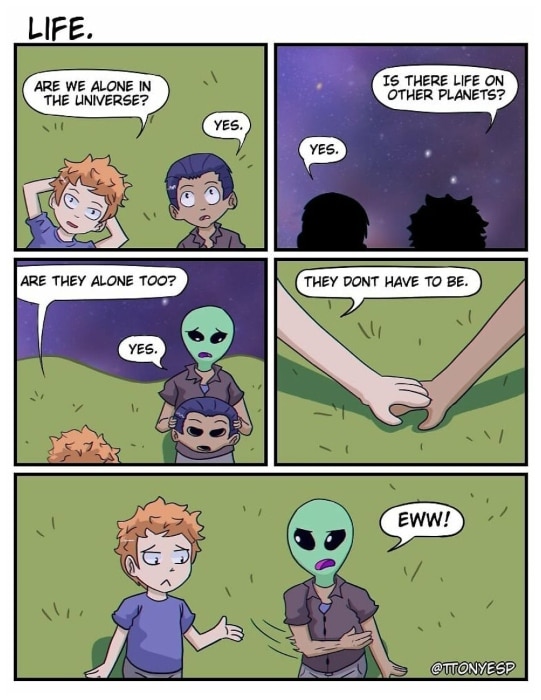
Artists must also be able to tell a tale through successive panels of artwork that take readers (or viewers) on a journey. Even if you are not the best writer in the world, you must have a plot in mind from beginning to end.
Pursue a degree in graphic art
Earning a degree is one of the most valuable methods to break into the comic book and webtoons industry. Although a college degree is not mandatory nor explicitly required, the quality of training you will receive can help you find work, advance in your area, or start your own business.
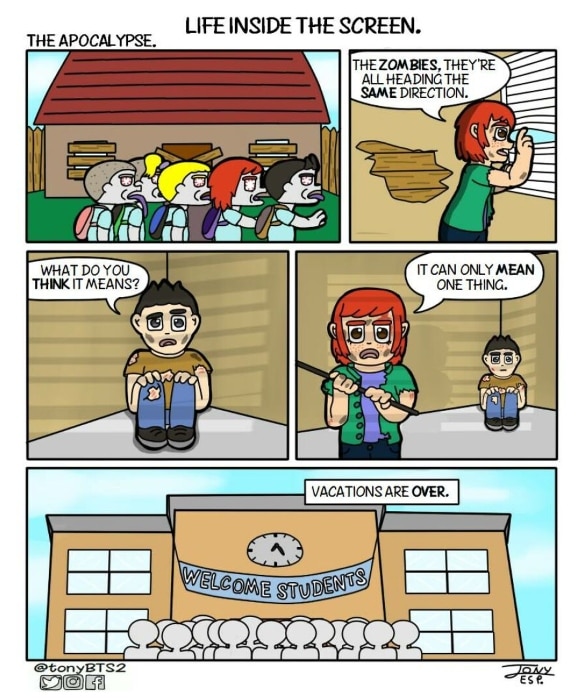
Most comic book artists will pursue an art degree with an emphasis in drawing or illustration, during which time they will master numerous studio or fine art techniques as well as graphic design. Art schools often offer specialized programs in drawing and illustration, emphasizing graphic novel and comic book art.
Webtoons
Webcomics, also known as Internet or online comics, are comics that are published on the internet, usually on an artist’s personal website, but often on sites such as Reddit, Imgur, Tapastic, or WEBTOON, to name a few.

They’re usually published on a regular schedule (Monday through Friday, 3 times a week, or on weekends) and are free to read, though most webcomic artists make money via ads on the site, or even by selling t-shirts with imprinted artwork. Xkcd and Saturday Morning Breakfast Cereal are two of the most popular webcomics nowadays that you can go ahead and check out.
You must have a portfolio
A great portfolio and website are two of the most critical tools for any webtoons or comic book artist. However, just as no two comics are alike, no two portfolios should be either, and a good artist will have a diverse portfolio to exhibit depending on the client or company.
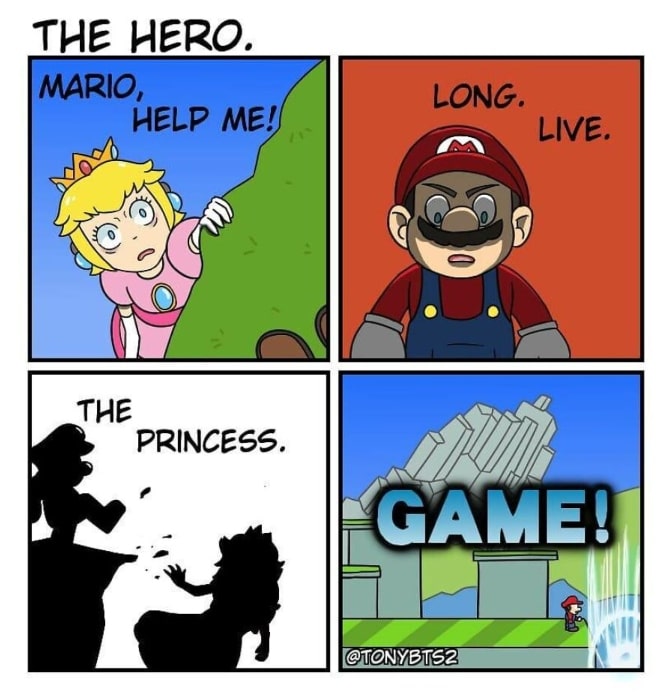
The major goal of a comic book artist’s portfolio, whether printed or available online as part of a personal website, is to demonstrate that you can draw in a range of styles well and consistently. It’s also necessary to have a personal brand. It can take years to develop your personal brand.
Freelancing
The lack of regular payments, long hours drawing and re-drawing, seeking clients, and simply learning how to operate your business might take a toll if you decide to freelance and try to break into the market on your own. In spite of this, many webtoons and comic book artists make a living as freelancers.
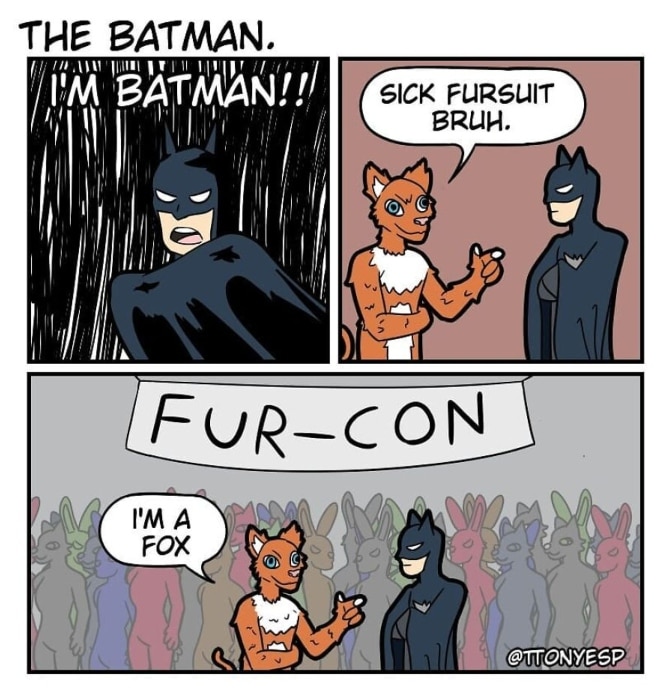
You can post samples and your profile on one of the many freelance sites, like UpWork or Guru, to get you started. However, you will not become wealthy overnight. As in most art areas and industries, you must prove yourself first, frequently making very little money at first.
How much can you make as a webtoon or comic book artist today
The majority of comic book artists work for newspaper syndicates, freelance, or comic book publishers. There is no payment information for comic book artists/cartoonists in the US Bureau of Labor Statistics. However, between 2014 and 2024, the job outlook for multimedia artists and animators (which includes graphic novel artists) is predicted to expand by 6%, with a typical median wage of around $64,000.
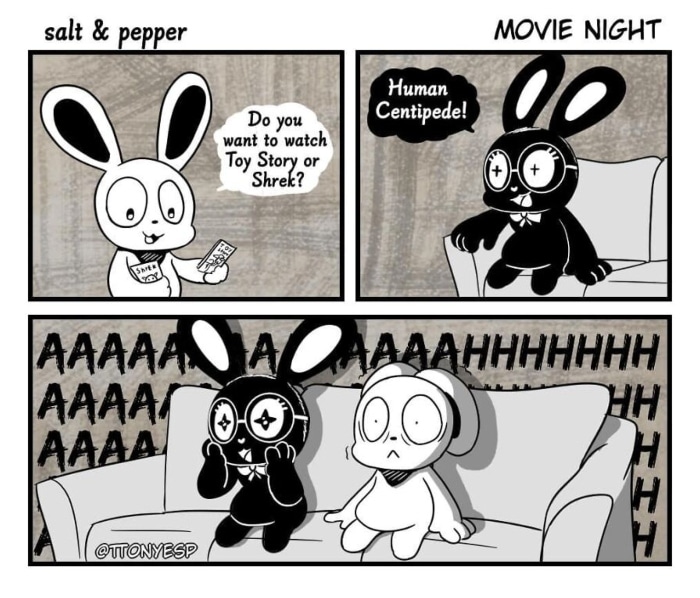
The amount an artist (or writer) is paid is determined by a number of factors, including firm size, location, media (printed or internet), and whether you work for a corporation or as a freelancer.
Make use of internships
Gaining professional experience while still in school can benefit because the field of comic book artists is so specialized. Internships, drawing a comic strip for your campus newspaper, or freelancing on the side are all possibilities. Joining certain associations and organizations and visiting conferences with your portfolio in hand might help an aspiring artist.

Persistence and effort are required to advance as a comic book artist. You can develop life-long industry connections via networking in school, at conferences, and other pertinent events, which can often lead to a job. Use every opportunity to make yourself available.
Recommended books
“Understanding Comics” by Scott McCloud is an excellent introduction to the genre if you want to learn why graphic novels, webtoons, and comic books are so popular among teenagers. McCloud investigates the nature of visual symbolism and the juxtaposition of pictures and words with wit and style as he explores the roots of sequential art, beginning with Egyptian hieroglyphics.
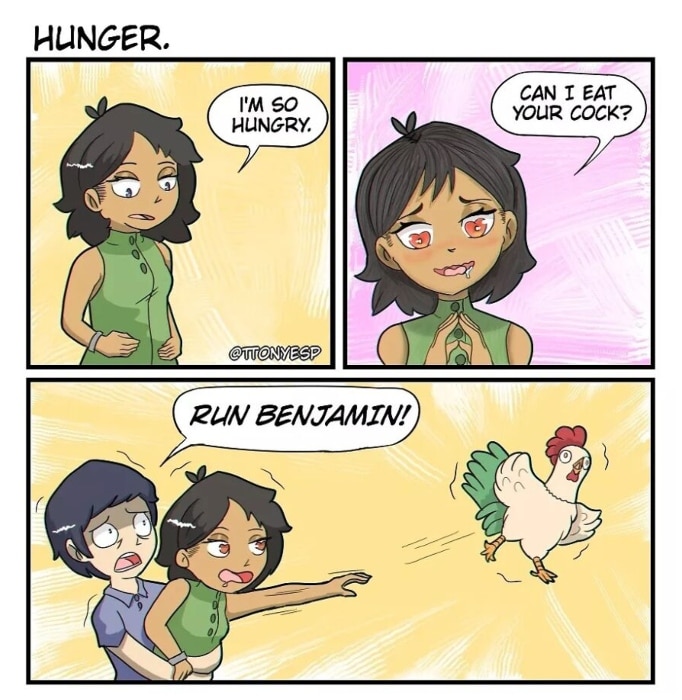
This is a fantastic 224-page comic book that is jam-packed with information and pleasure. It’s also a powerful demonstration of Scott’s remarkable artistic versatility. It is a great resource for anyone interested in young adult fiction, and it’s also an enjoyable read.
When Did Comic Books First Become Popular?
The so-called “Golden Age” of comic books lasted from 1930 to 1950, and it was during this time that the superhero archetype was first introduced to the canon. Some of the most well-known comic book characters of all time were created during this time period, including Superman, Batman, Spider-Man, Captain America, and Wonder Woman.
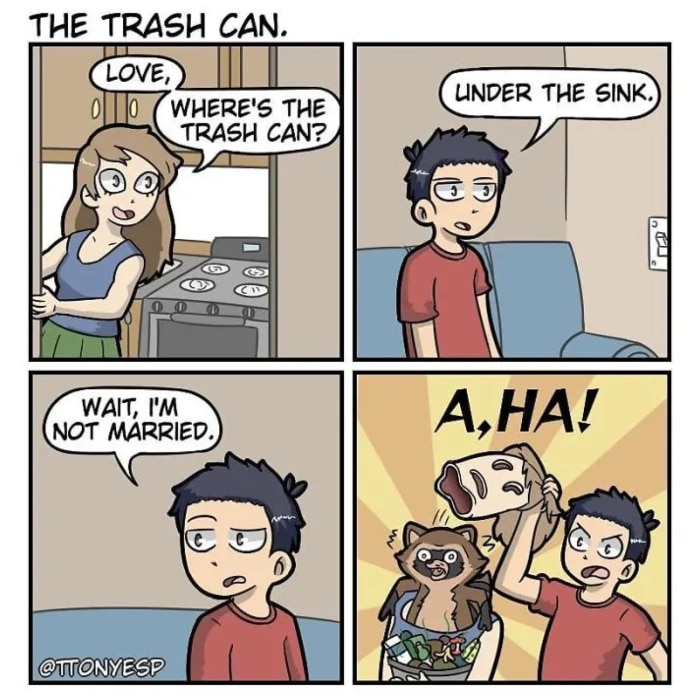
After WWII, new genres such as romance, Westerns, and science fiction supplanted the superhero genre. The modern age of comic books (the 1980s through to today) has experienced a dramatic expansion of form, as independent publishers and the internet have paved the way for new talent.
Morphology of a comic (I)
A comic book is typically composed of a number of elements that all work together to tell the story as the artist intended. First comes the panel, which is one illustration on a page usually surrounded by a border. A comic book page is made up of one or more panels.

Each panel moves the story along, by depicting an action with figures and speech bubbles. Then comes the gutter, which is the space between the panels. These spaces can be large or small, impacting how easy it is to read the pages. Then comes the tier; a single row of panels.
How he handles feedback
Tony has 34.8k Instagram followers, and the comments there can be positive or negative, but the artist keeps an open mind and sees criticism as an opportunity to better his work. He says, “Some love, some hate them, and others are just indifferent… but I always loved hearing my readers’ opinions, especially if it’s criticism.

It helps me improve in one way or another.” He’s a firm believer in the concept of ‘death of the author’. All he wants to do is make people laugh, but what the audience gets out of it is all up to them.
Morphology of a comic (II)
Then you have the splash, which is what we call a full-page illustration often used at the beginning of the comic book to introduce the story and establish the setting and mood. The spread is an illustration that is spread out over more than one page. You also need a caption; a box that is separate from the rest of the panel is usually used to provide context for what’s happening through a narrator’s voice.

The speech bubble/balloon contains the dialogue of the characters and inside the panel. Each balloon has a “tail,” which points to who is speaking.
What do you need to make a comic book or a webtoon?
While it is possible to create a comic book on your own, this is a rare skill. Writing comics is a difficult and time-consuming task. The majority of writers conceive the story first, then work with other artists to bring it to life on the page. Consider the numerous collaborators involved in the creation of a comic book.
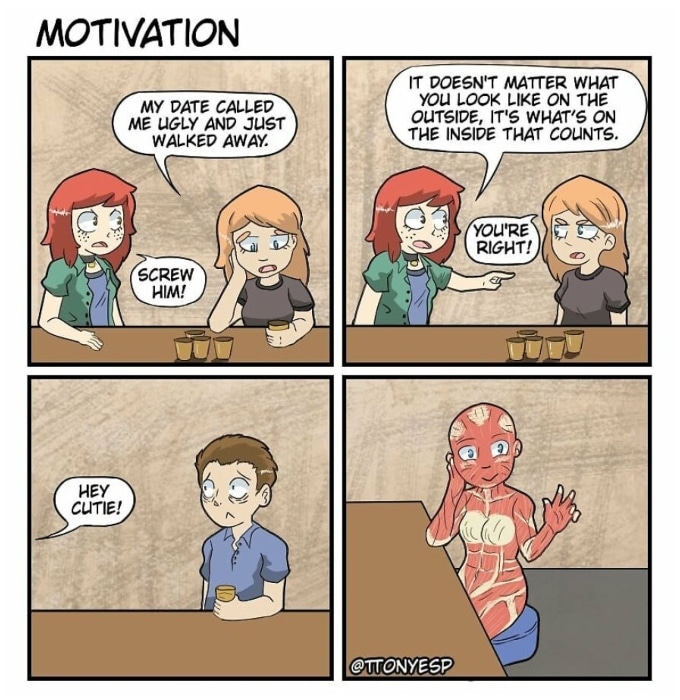
Firstly, you will need a writer, who will come up with a plot, setting, characters, conflict, and dialogue are all elements that the writer develops. They also write an outline and a script that the other collaborators can use as a guide.
An editor and an artist are needed
Every good writer needs an editor. An editor should, in theory, know a writer well and understand their goals for their webtoon or comic book, but still be able to offer constructive criticism, especially if something in the story isn’t quite hitting the mark.

Then you have the artist, who creates panel illustrations based on the writer’s directions. The artist has the ability to give the direction a subtle dimension; for example, the line “the character looks away” can be depicted in many ways, including a sorrowful expression on the character’s face, the character’s face in shadow, or the back of the character’s head angled just so.
A letterer and a colorist are also part of the process
A letterer uses typefaces, sizes, and calligraphy to tell a story. The letterer’s realm includes story titles, sound effects, and speech balloons. They also use ink to fill in the artist’s pencil lines.

Then the colorist comes in and fills in the black and white lines with color after the plot has been sketched and the ink has been set. Brushes and dyes were used in the past to accomplish this. While some colorists like to work entirely by hand, others prefer to utilize modern digital tools; however, neither method is superior; it all comes down to personal taste and preference.
The cover artist
The Cover artist is like being an illustrator but for book covers or webtoon opening pages. Their work will be seen by customers first in the store and may entice them to pick the comic book upt. It might be a collective work of the above-mentioned artistic roles, similar to the comic itself.

And then, there are a slew of different jobs you can choose from, such as product designer, layout designer, marketer, salesperson, and so on. Artists, like those who work in other print media and products, go to great lengths to get a concept onto the page and ultimately to the consumer.
How to structure a comic book in 3 Steps
When structuring a comic book, you will need to take into consideration 3 main acts to articulate the story. This technique is used both in films and other narrative art forms. It serves as a guide. Act 1, introduces the central characters and the comic book’s setting, mood, and dominant conflict.

Then comes Act 2, where you tackle character development, individual story arcs, setbacks, challenges, what is learned, and finally, the climax. Lastly comes Act 3, where the post-climax resolution occurs, in which the characters undergo a transformation following what they learned from their ordeal.
The comic as a storytelling medium
Comics and webtoons are a type of visual storytelling that combines visuals and text. Panels, which are self-contained frames that tell one story beat, are used to present them in order (for example, one moment, one establishing shot of the scenery).
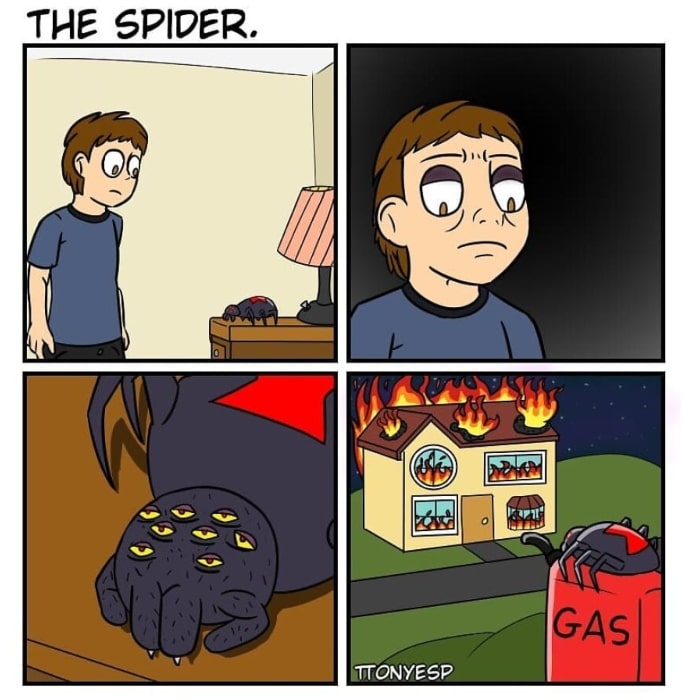
The medium encourages creativity by allowing comic book creators to experiment with the amount of space available on each page. “When you get to comics, you get to use graphics and words to try to achieve things inside the reader’s head that you wouldn’t be able to do with prose or cinema,” says acclaimed comic book writer Neil Gaiman.
Self-Published Comics
Comic book and webtoons artists may also crowd-fund the printing of a book, working directly with printers and handling marketing and distribution themselves, or perhaps even sponsoring the entire process themselves. Self-published works may require collaboration with a variety of retailers, frequently small book shops, to sell their work wholesale or on consignment, depending on how the shop operates and interacts with its suppliers.

Self-publishing is one of artists’ many options to get their work out there. However, it is the most expensive one. On the other hand, it gives them a lot more freedom to publish their comic books.
Promoting on social media
Artists use social media extensively to promote their work. You can expect a tweet, a Facebook post, image previews on Instagram, short TikToks, and more whenever a comic is newly published or updated.

If the artist’s comic or webtoon is a part of a larger website or if they have a marketing team or person working with them, they may be able to reach a different, more established audience versus the one that specifically follows them and their work (which would allow their own reader and follower count to grow). Social media is an easy and cheap way to promote one’s work.
Crowdfunding to promote your comic
Don’t underestimate the potential of crowdfunding — there is nothing wrong with asking for financial support from your fans if it means you can provide a great product.

Sites like Kickstarter, Patreon, and Indiegogo are popular (and very wonderful) ways to fund your passion comic book project, as well as a great method to spread the news about your work, it helps advertise your comic book by making it easily shareable.
Make your comic easily available online
Having your entire comic available online – webtoon – as a PDF when you’re attempting to sell it for actual money may seem illogical. However, this is an effective strategy because it’s a low-effort approach for folks to see your work.

By making your comic easily available, you can increase readership. It’s a low-effort approach for folks to see your work. People may be more motivated to buy actual copies after seeing it online.
Offer a free online preview
You can always make a free online preview of your comic, or the first issue, and then sell the subsequent issues/trades. Promote your comic book and get people interested in it for free, and they’ll be more likely to pay for future issues.

Not only are they now fans, but you are also the one who provided them with a cool free comic! And they’ll thank you for it.
Be a guest blogger
When it comes to promoting your comic book or webtoon, it’s not always necessary to market it directly.
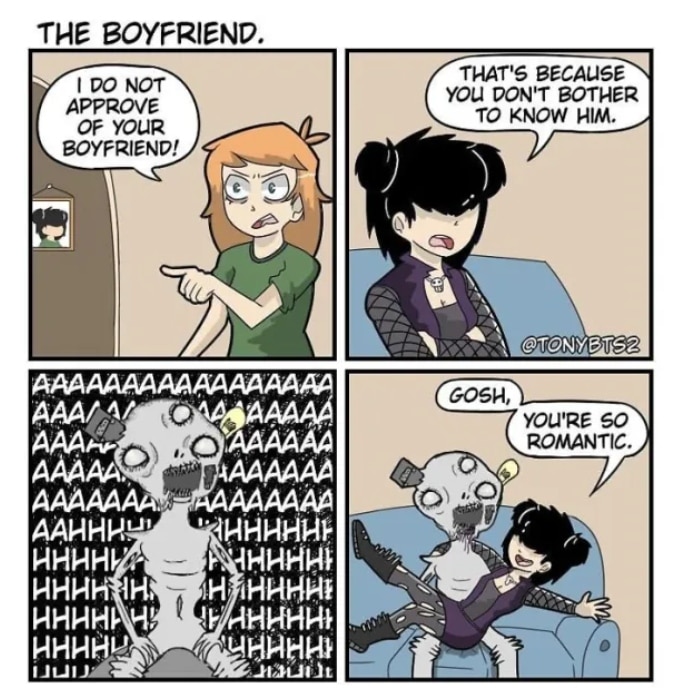
If you, for example, become a guest blogger on a blog that caters to your niche, you’ll pique people’s interest with your writing, and you can further attract their attention by including a link to your site or information about your comic in your author bio to promote your comic on the down low.
Sell your work in conventions
You can gain readership and attention in real life as well. Big and small comic book conventions are a good place to start. You don’t need to pay for a booth in the San Diego Comic-Con to sell your stuff; smaller, more specialized expos and conventions, such as Chicago’s CAKE, are also viable options.

Comic bookstores, regular bookstores, and local coffee also make great opportunities to market your product.
Sell swag
Have you ever purchased a pin or shirt with a fantastic design only to discover that the artwork was taken from a comic or television show? It leads you to the source and you end up discovering a cool graphic novel.

This can be a fantastic method to promote your comic. Consider selling patches, pins, or clothing with designs from it. Vinyl stickers are also quite popular in these circles.
Buy Some Banner/Button Ads
The online advertisement might not be the cheapest option, but it’s a great investment in the long term. You can hire talented webmasters to make the button ads and banners to help you recruit followers.

They can make the image as an active graphic hyperlink that takes you back to your index page, which would enable you to promote yourself more efficiently. Sometimes you need to spend money to make money.
Embeds & RSS
Allowing numerous embedding options and RSS feeds is another approach to marketing your webtoons from your website. You’ll require the services of a professional developer, but making it simple for others to share your cartoons will go a long way.
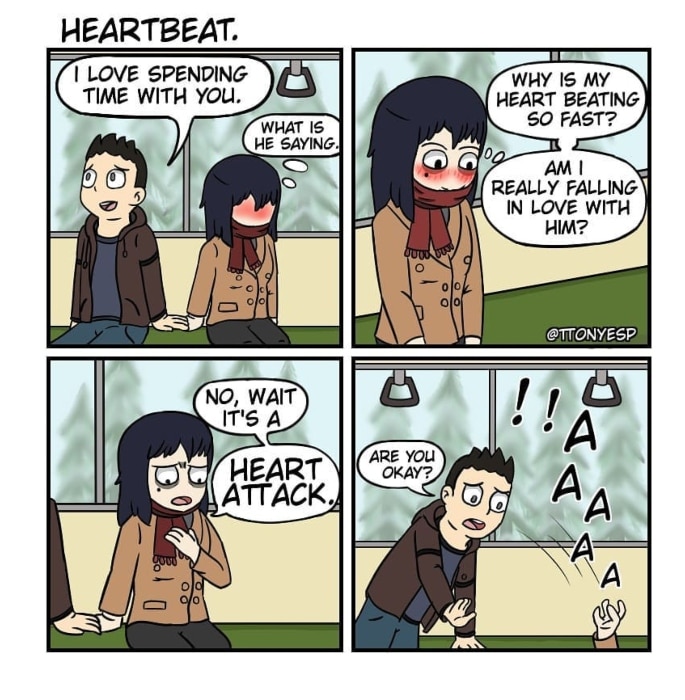
Have an option for people to embed a daily cartoon thumbnail in the sidebar of their website. It’s entertaining stuff for them, and it gets your attention and a link.
Another tool that is available out there is Pinterest. Freelance cartoonists have been seeing it as a referrer in their Google Analytics, and if you get a pin to go viral, you can get a lot of traffic from it.
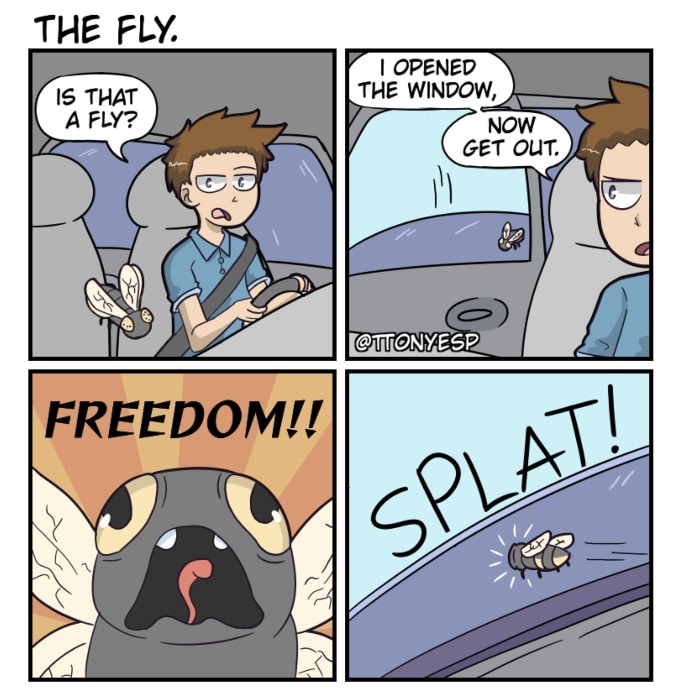
However, as of 2019, Pinterest has cut down on repin threads and other sought-after strategies for repins. Don’t worry; a good viral pin will get repins on its own.
Flickr
While Flickr appears to have faded into Instagram’s shadow, it’s still an important place to have a presence. You can use it to store photos of your webtoon collection.
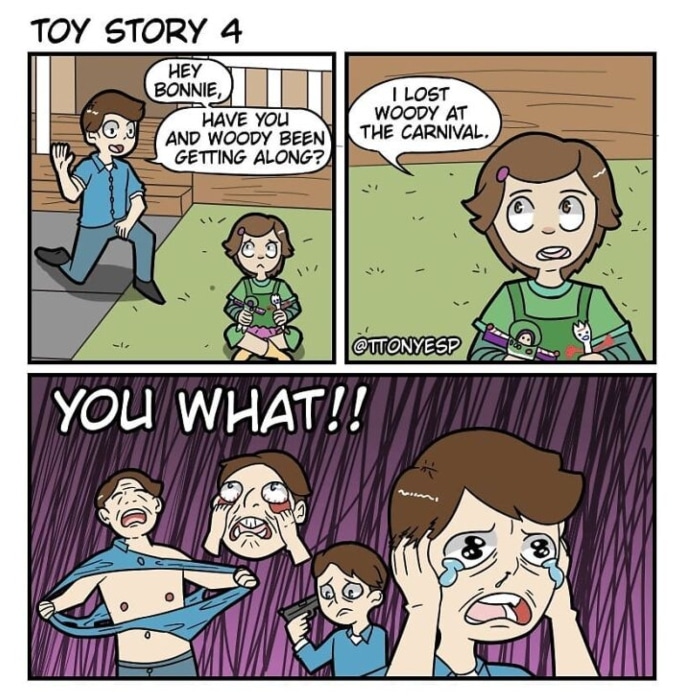
A smart strategy is to write a blog post on a set, display a photo, and direct folks to Flickr for the rest. Although it might not be the biggest source of traffic, it does have an impact on search results.
Believe in the idea
You stand out among all the web information thanks to your unique point of view. Start with a subject you are very interested in. You should be dedicated to your characters and plot because creating a comic book requires a significant amount of time and work.
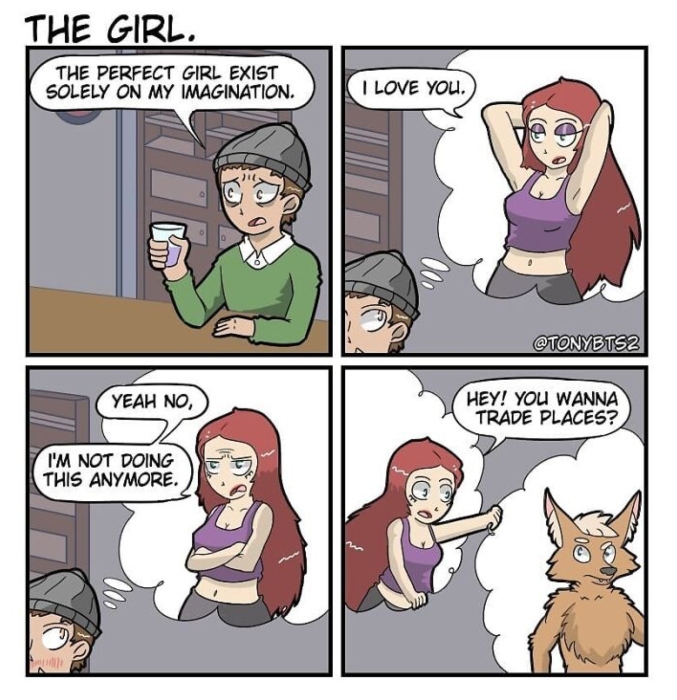
Keep a notebook nearby so you may record any story ideas, character concepts, or dialogue as they come to you. It is essential that you work on character development as well as story development.
Develop your script before illustrating it
Don’t start creating your comic book right away. Instead, take your time. You already know how crucial it is to have a gripping plot if you’ve ever read a book. Write your script before you start drawing if you want to make a comic that reads smoothly and is expertly put together from start to finish.

If not, you run the risk of having to delete or alter dozens of panels if the plot falls flat. That would require a complete rewrite, which would take a lot of time.
Learn about the practices of your favorite comic book creators
After viewing enough of them, you might begin to believe that you are capable of producing your own comics. However, there’s always something new that you can learn from more skilled illustrators.
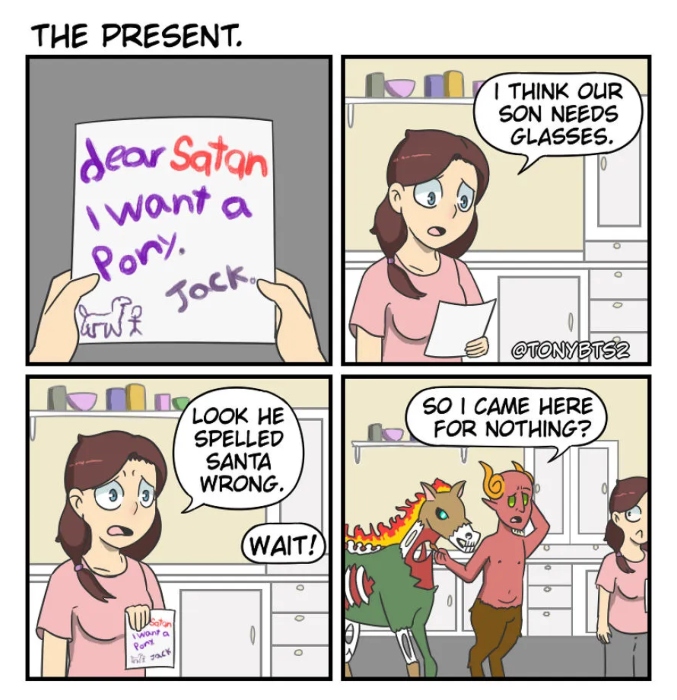
By reading blogs, books, and interviews, you can learn more about the methods used by your favorite comic book authors. There are standards and advice readily available for illustrators who are new to the comic book business. Use these resources and tools when you’re feeling unmotivated or stuck.
How to build the tension right
To keep readers interested, make sure the content fits into each panel while the story continues. Do you consider the discussion to have been successful? On each page, are there too many actions? Think about how you can create tension at the end of each page to draw the reader in.
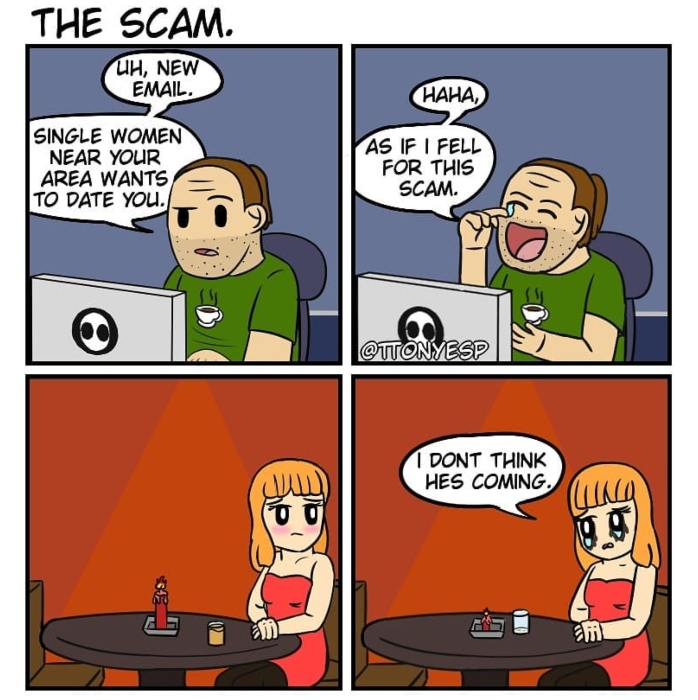
You’ll learn to discern when and how to cut your panels as you draw more. The ability of synthesis allows a single act or sight to frequently convey a thousand words.
Establish a consistent illustration style
The best advice from seasoned comic book creators is to pick an illustration style that works for your project. Some characters’ or backdrops’ texture, shading, or color may be affected. A page’s allowed frame count may also be restricted.

The objectives are to maintain visual consistency and refrain from creating drawings that cannot be repeated later. If the look and feel of your brand are constant, your readers will feel more at ease. It makes you more credible and recognizable, both of which are essential for gaining and maintaining a following.
Sketching approach
We have access to a wide selection of technologies when it comes to drawing. No matter if you sketch on a tablet, with a pencil and paper, or using drawing software, the process will always be unique. Whatever method of sketching you choose, there are a ton of articles, classes, and forums to help you.

You’ll normally draw (outline), ink (to add texture and depth), color (choose a color scheme), and letter your comic book illustrations (selecting a font). Consider your comfort level with the technologies you chose to utilize for your sketches.
Your readers experience
The format you select will affect the reading experience you have while reading print comics. Comics are a common form of media in blurb magazines. There is plenty of space on each page, and printing many copies is not expensive.
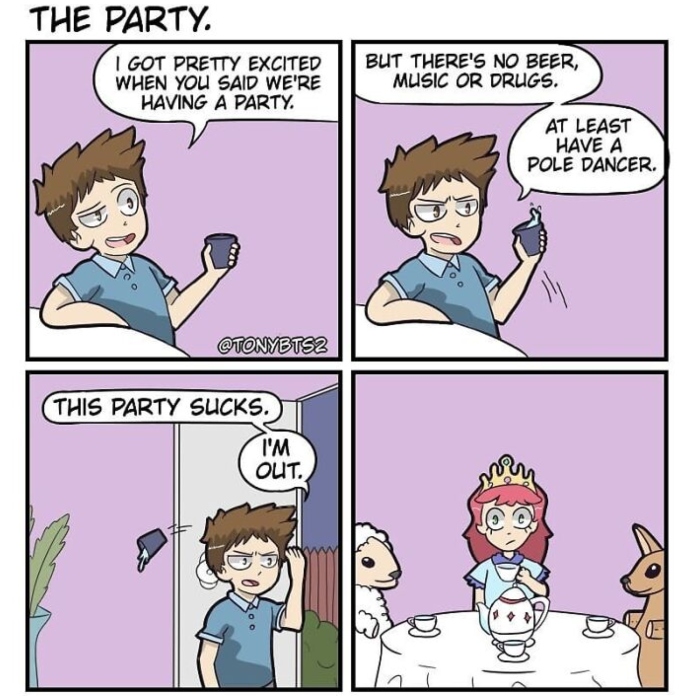
Choose the publishing tool that best suits your skills after choosing your format. At this stage, you will be able to see the finished item. You do have other choices, though. You can enter the world of webcomics by starting a blog or an Instagram account.
Tony webtoons’ humor style
Tony’s humor is dark, and he believes that it’s ok to enjoy dark humor. In fact, a study by Willinger, U., Hergovich, A., Schmoeger, M. in Cognitive Processing suggests that this is true. Apparently, If you enjoy inappropriate and darker jokes, you’re not bad, just smart.
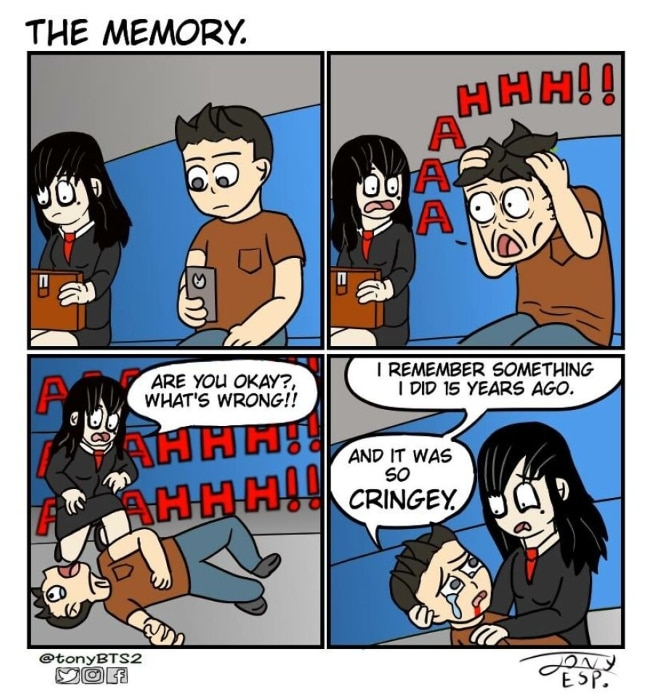
So, even though dark comedy isn’t everyone’s cup of tea, feel proud when you laugh at it. “Dark humor isn’t for everyone, but I like to believe that nothing is off the table when it comes to comedy. Of course, I have my standards and preferences, so even I have my limits.”
Death of the author concept
Death of the Author is a literary criticism notion from the mid-twentieth century, named after Roland Barthes’ seminal 1967 article on the subject. It asserts that an author’s objectives and background (including politics and religion) should have no bearing on how their work should be interpreted.
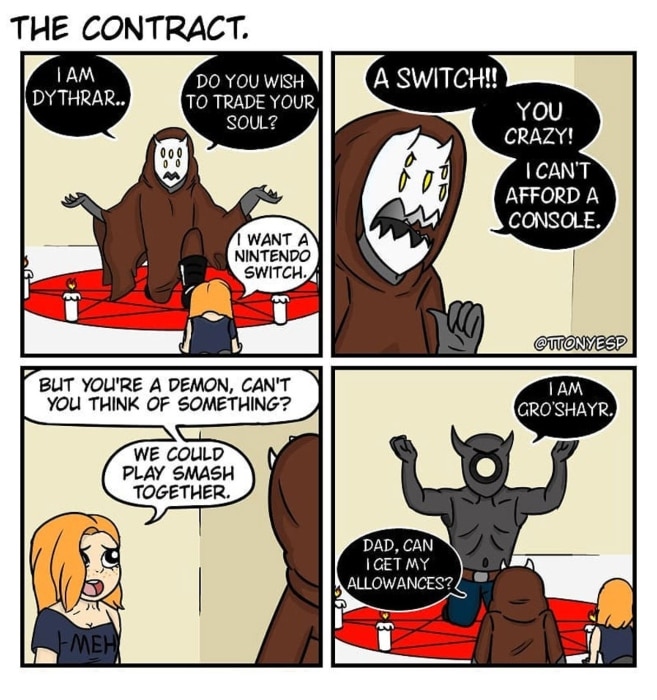
According to Barthes, readers must thus separate a literary work from its creator to liberate the text from prejudiced interpretation. A work’s essential meaning depends on the reader’s impressions; “a text’s unity lies not in its origins,” or its creator, “but in its destination,” or its audience.